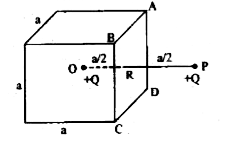The density of the material of a cube can be estimated by measuring its mass and the length of one of its sides. If the maximum error in the measurement of mass and length are 0.3% and 0.2% respectively, the maximum error in the estimation of the density of the cube is approximatelySolution in Bengali
1.1%
0.5%
0.9%
0.7%
Step by step video & image solution for The density of the material of a cube can be estimated by measuring its mass and the length of one of its sides. If the maximum error in the measurement of mass and length are 0.3% and 0.2% respectively, the maximum error in the estimation of the density of the cube is approximately by Physics experts to help you in doubts & scoring excellent marks in Class 12 exams.
Updated on:21/07/2023Topper's Solved these Questions
- QUESTION PAPER 2019BOOK - WB JEE PREVIOUS YEAR PAPERCHAPTER - QUESTION PAPER 2019EXERCISE - PHYSICS (CATEGORY-II)
4 Videos
- QUESTION PAPER 2019BOOK - WB JEE PREVIOUS YEAR PAPERCHAPTER - QUESTION PAPER 2019EXERCISE - PHYSICS (CATEGORY -III)
3 Videos
- QUESTION PAPER 2018BOOK - WB JEE PREVIOUS YEAR PAPERCHAPTER - QUESTION PAPER 2018EXERCISE - PHYSICS
40 Videos
- QUESTION PAPER 2021 BOOK - WB JEE PREVIOUS YEAR PAPERCHAPTER - QUESTION PAPER 2021 EXERCISE - PHYSICS (CATEGORY -II)
6 Videos
Similar Questions
Two identical blocks of ice move in opposite directions with equal speed and collide with each other. What will be the minimum speed required to make both the blocks melt completely, if the initial temperatures of the blocks were -8° C each ? (Specific heat of ice is 2100 Jkg−1K−1 and Latent heat of fusion of ice is 3.36×105Jkg−1)
View SolutionA projectile thrown with an initial velocity of 10ms−1 at an angle a with the horizontal, has a range of 5 m . Taking g=10ms−2 and neglecting air resistance, what will be the estimated value of α ?
View SolutionConsider a region in free space bounded by the surfaces of an imaginary cube having sides of length a as shown in the diagram. A charge +Q is placed at the centre O of the cube. P is such a point outside the cube that the line OP perpendicularly intersects the surface ABCD at R and also OR=a/2. A charge +Q is placed at point P also. What is the total electric flux through the five faces of the cube other than ABCD?

View SolutionTwo metal wires of identical dimensions are connected in series. If σ1 and σ2 are the electrical conductivities of the metal wires respectively, the effective conductivity of the combination is
View SolutionThe density of a cube is measured by measuring its mass and length of its sides. If the maximum error in the measurement of mass and length are 4% and 3% respectively, the maximum error in the measurement of density will be
View SolutionThe density of a cube is measured by measuring its mass and the length of its sides. If the maximum errors in the measurement of mass and length are 3%and2%, respectively, then find the maximum error in the measurement of the density of cube.
View SolutionThe density of a cube is found by measuring its mass and the length of its side of the maximum errors in the measurement of mass and length are 0.3% and 0.2% respectively, the maximum error in the measurement of density is
View SolutionThe density of a cube is measured by measuring its mass and length of its side. If the maximum errors in the measurements of mass and length are 3% and 2% respectively. Then the maximum error in the measurement of density is :
View SolutionThe density of a cube is measured by measuring its mass and length of its sides. If the maximum error in the measurement of mass and lengths are 3% and 2% respectively, the maximum error in the measurement of density would be
View SolutionThe density of a cube is measured by measuring mass and the length of its sides. If the maximum error in the measurement of mass and length are 3% and 2% respectively, then the maximum error in the measurement of the density of cube is :
View SolutionWe know that the density of a cube can be measured by measuring its mass and length of its side. If the maximum errors in the measurement of mass and length are 3% and 2% respectively, what is the maximum error in the measurement of the density of the cube?
View SolutionWe know that the density of a cube can be measured by measuring its mass and length of its side. If the maximum errors in the measurement of mass and length are 3% and 2% respectively, what is the maximum error in the measurement of the density of the cube?
View SolutionWe know that the density of a cube can be measured by measuring its mass and length of its side. If the maximum errors in the measurement of mass and length are 3% and 2% respectively, what is the maximum error in the measurement of the density of the cube?
View SolutionWe know that the density of a cube can be measured by measuring its mass and length of its side. If the maximum errors in the measurement of mass and length are 3% and 2% respectively, what is the maximum error in the measurement of the density of the cube?
View SolutionWe know that the density of a cube can be measured by measuring its mass and length of its side. If the maximum errors in the measurement of mass and length are 3% and 2% respectively, what is the maximum error in the measurement of the density of the cube?
View Solution
